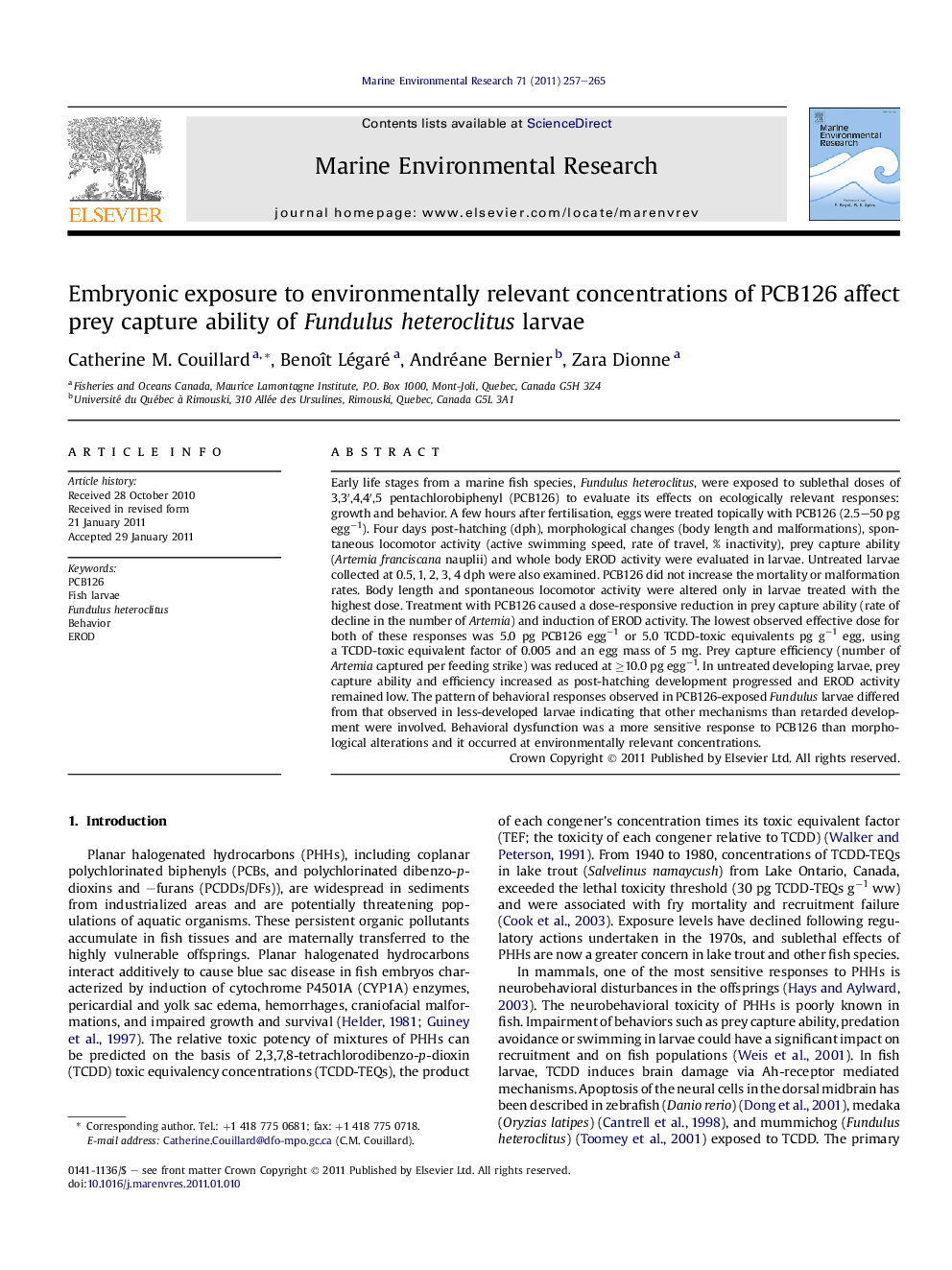| Article ID | Journal | Published Year | Pages | File Type |
|---|---|---|---|---|
| 4551104 | Marine Environmental Research | 2011 | 9 Pages |
Early life stages from a marine fish species, Fundulus heteroclitus, were exposed to sublethal doses of 3,3′,4,4′,5 pentachlorobiphenyl (PCB126) to evaluate its effects on ecologically relevant responses: growth and behavior. A few hours after fertilisation, eggs were treated topically with PCB126 (2.5–50 pg egg−1). Four days post-hatching (dph), morphological changes (body length and malformations), spontaneous locomotor activity (active swimming speed, rate of travel, % inactivity), prey capture ability (Artemia franciscana nauplii) and whole body EROD activity were evaluated in larvae. Untreated larvae collected at 0.5, 1, 2, 3, 4 dph were also examined. PCB126 did not increase the mortality or malformation rates. Body length and spontaneous locomotor activity were altered only in larvae treated with the highest dose. Treatment with PCB126 caused a dose-responsive reduction in prey capture ability (rate of decline in the number of Artemia) and induction of EROD activity. The lowest observed effective dose for both of these responses was 5.0 pg PCB126 egg−1 or 5.0 TCDD-toxic equivalents pg g−1 egg, using a TCDD-toxic equivalent factor of 0.005 and an egg mass of 5 mg. Prey capture efficiency (number of Artemia captured per feeding strike) was reduced at ≥10.0 pg egg−1. In untreated developing larvae, prey capture ability and efficiency increased as post-hatching development progressed and EROD activity remained low. The pattern of behavioral responses observed in PCB126-exposed Fundulus larvae differed from that observed in less-developed larvae indicating that other mechanisms than retarded development were involved. Behavioral dysfunction was a more sensitive response to PCB126 than morphological alterations and it occurred at environmentally relevant concentrations.
► This is the first study reporting neurobehavioural effects of PCB126 in larval fish. ► Prey capture ability of Fundulus larvae is reduced at doses causing no morphological changes. ► Prey capture ability is negatively correlated to EROD induction. ► The potency of other dioxin-like compounds to induce this response should be assessed.
